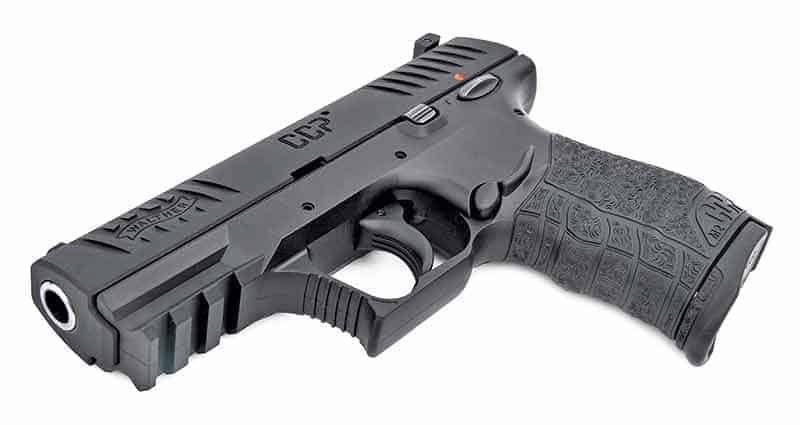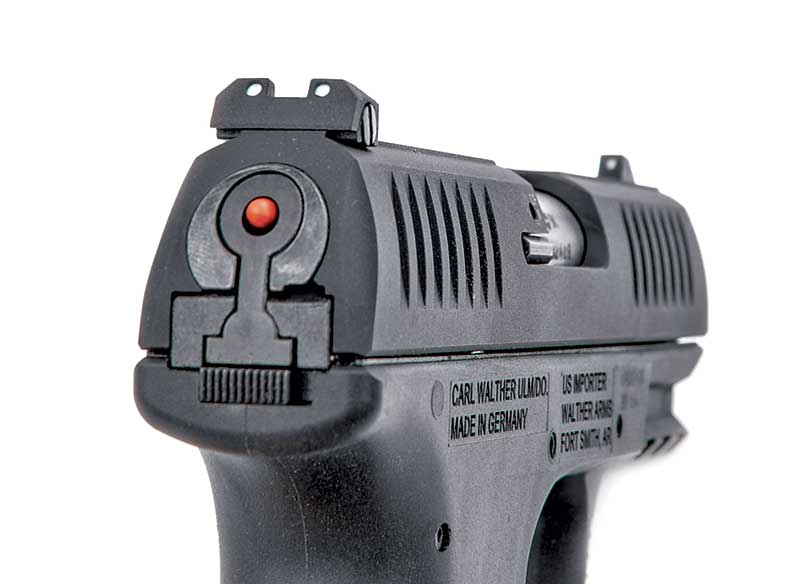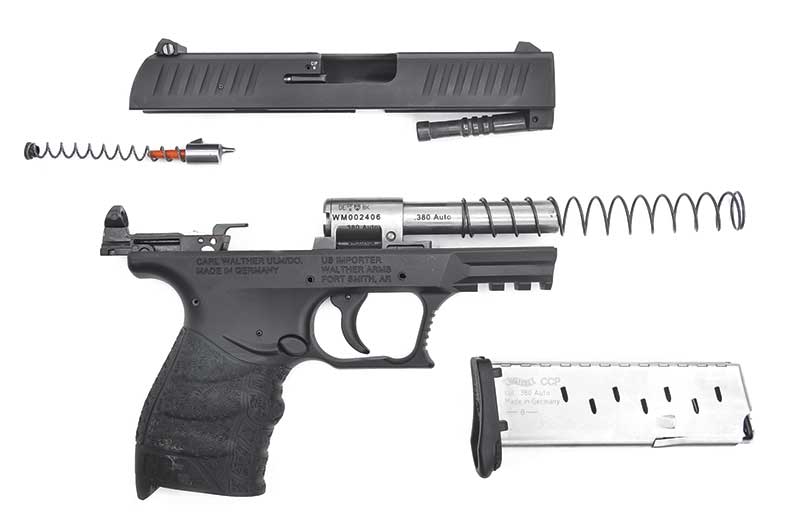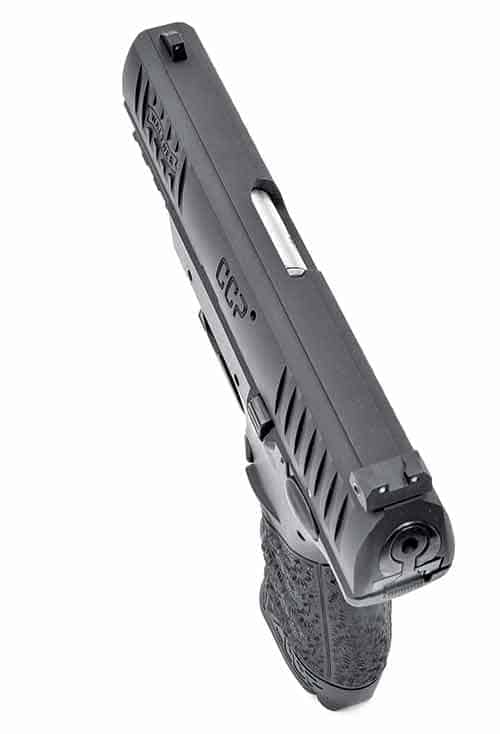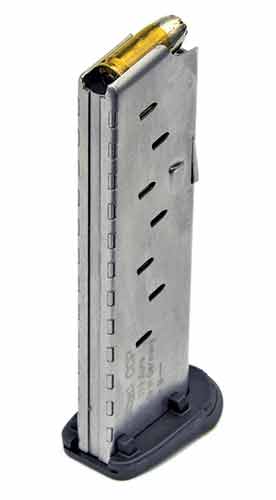Did The CCP Perform?
Bench rested at seven yards, I shot strings of five-shot groups and discovered the striker-fired, 3.54″ barrel CCP was nearly as accurate as my SA PPK and Beretta 84. Fixed barrel guns like these generally have an accuracy edge over camming barrel guns and the CCP’s polygonal rifling is said to produce better accuracy through a snugger fit between bullet and bore with less deformation and more consistent velocities. How much any of this may, or may not, have affected how well this gun actually shot is beyond my ken to know.
The fact was the CCP’s great accuracy surprised me. During the course of my bench testing where I obsess over wringing every bit of accuracy from my test guns by careful and consistent bracing, breathing and squeezing to the point where shooting is no fun, I concluded the CCP had one of the creepiest, stop-and-go, halting trigger pulls I’ve ever encountered, I was sure I’d shot terribly until I examined my target. Winchester’s 95-gr. Train & Defend “D” JHP averaged 1″ groups. Browning’s BPT 95-gr. loads averaged 1.3″. HSM’s 100-gr. cast, RNFP averaged 1.45″. The CCP shot the solid copper, self-defense, Black Hills Ammunition HoneyBadger 60-gr. and Fort Scott Munitions 95-gr. TUI bullet better than my PPK or Beretta, with average groups of 1.59″ and an amazing 0.78″ respectively. I wonder if it’s the curving lands and grooves of the polygonal rifling?
Striker fired pistols aren’t known for smooth, crisp, breaking trigger pulls. Though the CCP’s trigger exceeds mere squishiness, perhaps the relative lightness of the pull at 5.5 lbs. compensates for it. In slow, aimed fire, it didn’t seem detrimental to accuracy in the way I’d expected. In rapid fire, standing, two-hand hold shooting, the trigger creep so appalling during my 200 rounds of bench rest testing was completely unnoticeable and my groups averaged just over 1.5″. By this time, I was accustomed to the CCP’s trigger and was shooting it to the best of my ability.
I also tried shooting it in panic mode, pointing without trying to use the sights, and firing a four-round string as fast as I could safely manage against an old T-shirt “assailant” seven yards away. The result was 3-4 chest hits on average. Compared against my PPK, SCCY, Keltec and Beretta, only the Beretta grouped its shots as closely as the CCP. I’ll bet this had a lot to do with the CCP’s grip fit and low recoil resulting from the SoftCoil delayed blowback system. The CCP had, hands down, the best grip. It’s ergonomic, aggressively stippled, has three distinct palm swells, a pinky rest magazine floor plate and front grip strap with diminishing finger grooves working together to provide me with a sure and consistent shooting grasp on the gun.

